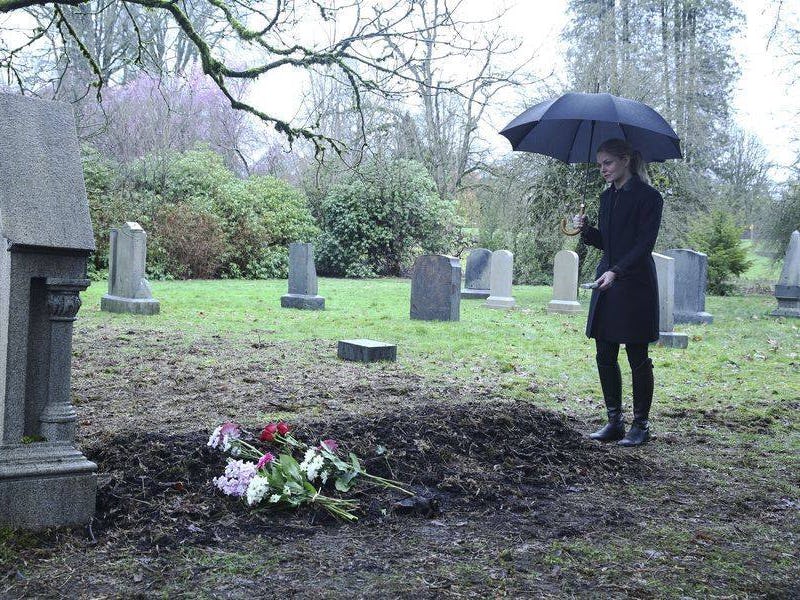How the King Arthur Series Could Break the Fairy Tale Show Curse
From 'Sleepy Hollow' to 'Once Upon A Time' new spins on old stories veer off the rails on TV. But the new King Arthur show might just avoid that folly

It is a truth universally acknowledged: television shows that are adapted from tales as old as time eventually end up crawling up their own asses. See Once Upon A Time, Sleepy Hollow, or Grimm. All began with intriguing updates to age-old stories we’re all familiar with. All veered off the rails a couple seasons in. Logically, then, the news of an impending police procedural show on Fox that will put a modern spin on the King Arthur myth should raise red flags. But as unlikely as it sounds, it might just save the sub-genre of “old/modern shows.”
Called Camelot, its premise is as follows:
When an ancient magic reawakens in modern-day Manhattan, a graffiti artist named Art must team with his best friend Lance and his ex, Gwen an idealistic cop — in order to realize his destiny and fight back against the evil forces that threaten the city.
Aside from being hilarious, re-imagining King Arthur as “graffiti artist named Art,” sounds just as questionable as reimagining Ichabod Crane into an improbably GQ-looking resurrected former professor. It’s an idea that might sound cool and edgy to network execs in theory, but it’s bound to be a mess in practice before long.
Shows in this sub-genre go wrong when they cast too wide a net. Sleepy Hollow could have only used material from the story The Legend of Sleepy Hollow, but it chose to weave Rip Van Winkle and biblical mythology about the Horsemen of the Apocalypse into it, too. It’s no wonder the show fell down a rabbit hole before long, as it got caught up in its own mythology and forgot to let its characters continue to be interesting.
Like Sleepy Hollow, Grimm and Once Upon A Time both began with enormous potential. Curiously enough, of all the fairy tales they worked with, both gave Little Red Riding Hood the most intriguing treatment in different ways. Grimm’s pilot re-imagined the tale in a way that involved a red-sweatshirt clad jogger being attacked in the woods and a beast-like creature that toyed with viewers expectations. Once Upon a Time, on the other hand, gave the tale a spin that empowered Red and wove her identity together with the wolf’s.
The tale of Little Red Riding Hood is deeply entwined with notions of female sexuality, which is why the story has stayed relevant: No matter how cultural mores evolve, it’s a topic people will always engage. Grimm and Once Upon A Time were able to successfully give their own takes on it because they engaged with the aspects of the story humming beneath the surface.
But in later seasons, both series dipped their hands into too many areas. They threw so much shit at the wall to see what stuck that the wall’s very foundation began to crumble. Once Upon A Time is a particularly egregious example. Instead of finding interesting themes in the material, it simply chose to combine different stories in increasingly contrived ways. Peter Pan became Rumplestilskin’s dad, who was Captain Hook’s enemy, who was in love with Snow White’s daughter, who had a kid with Peter Pan’s grandson, who was adopted by the Evil Queen.
During its Peter Pan storyline, the show made a half-assed attempt to draw comments on immortality and identity from the Lost Boy scenario, but it became muddled beneath the plot machinations. Instead of finding intriguing ways to twist and subvert these stories, Once Upon A Time — like Grimm and Sleepy Hollow — turned them into a convoluted soap opera.
King Arthur is already a bit of a soap opera, which is why the new show Camelot might just break the mold. Although its description sounds dubious, Arthurian mythology is less likely to cast too wide a net. There are certain accepted story beats that offer ripe areas to plumb: A love triangle; some sort of resurrection; a complicated family. But otherwise it has freedom to move around without feeling like it’s jumping the shark from a well-worn story. If the show keeps it simple, it won’t fall down a rabbit hole.
New spins on old stories will never go out of style, but they should learn from the past — especially if it’s still airing on TV. If all else fails, then it would do well to go the Penny Dreadful route and relish its own insanity.